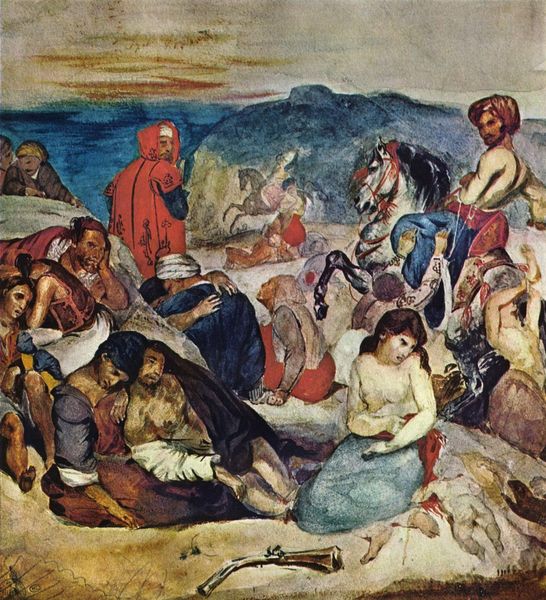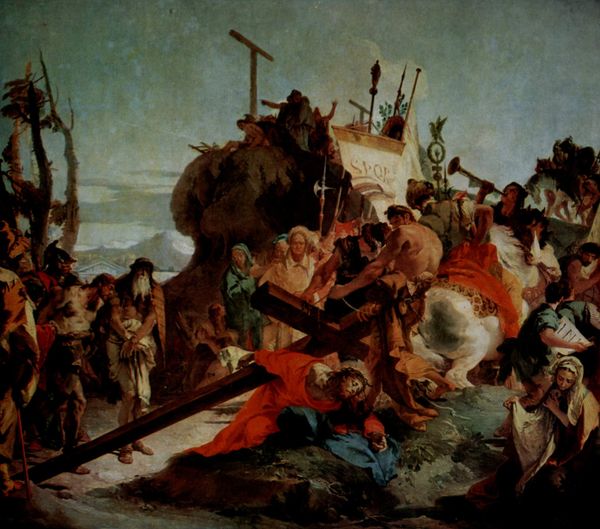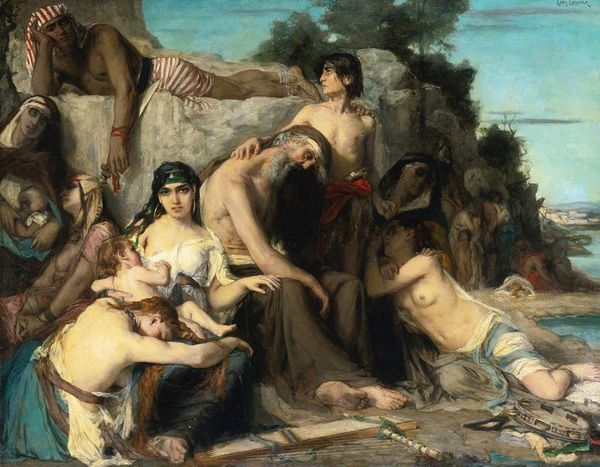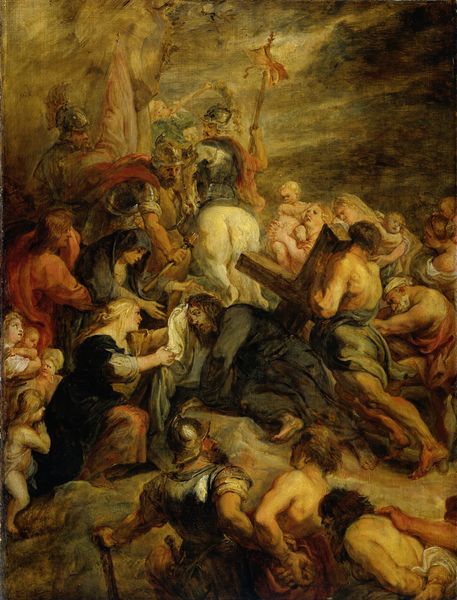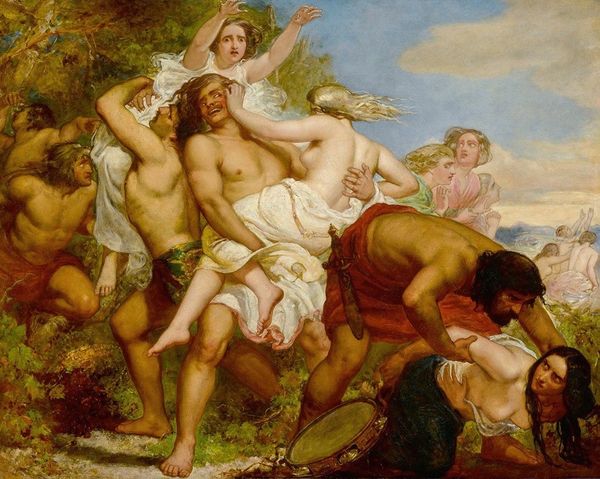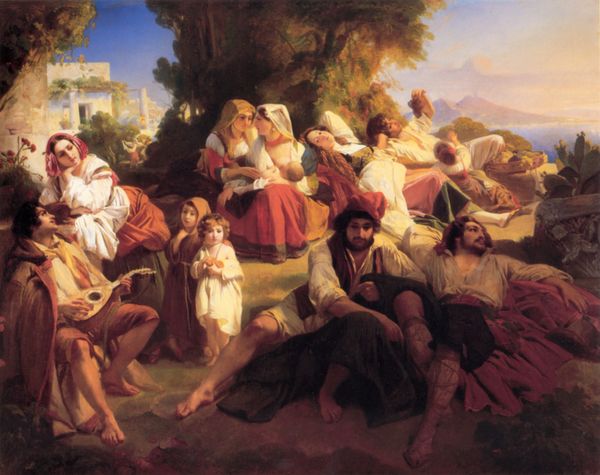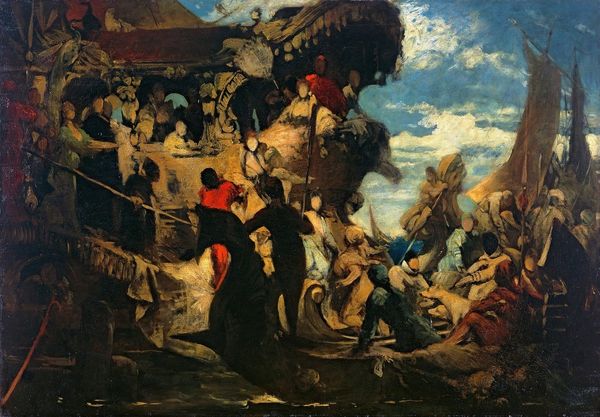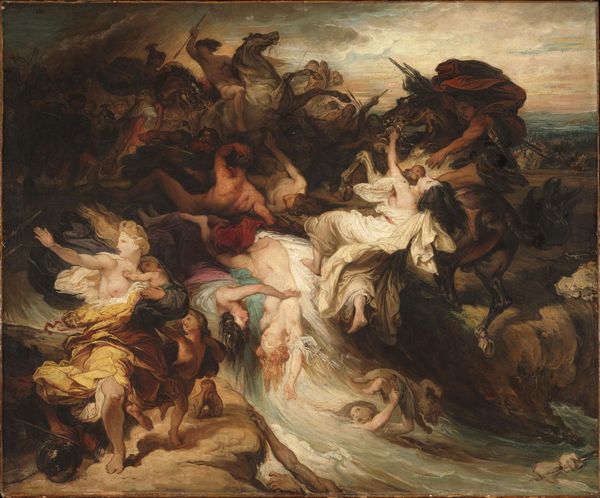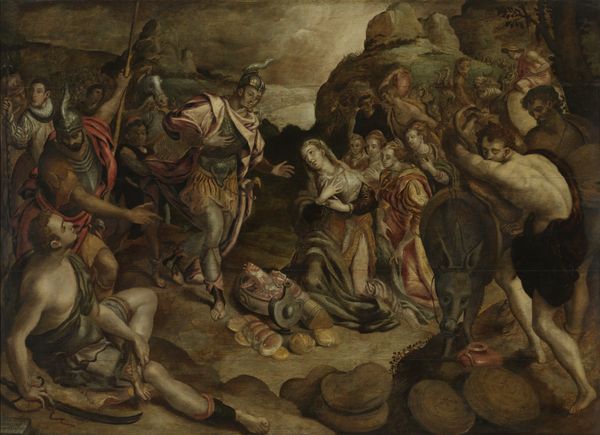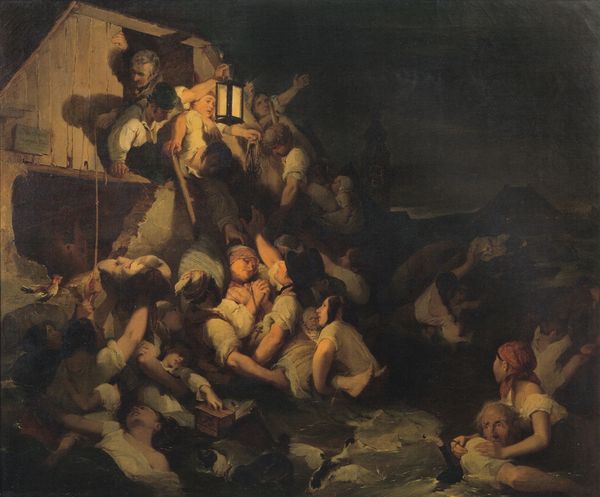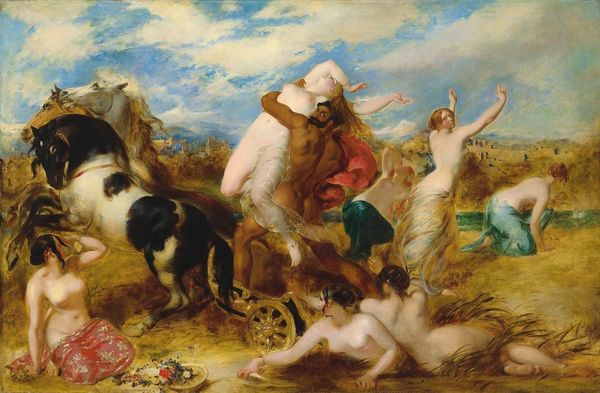
painting, oil-paint
#
narrative-art
#
painting
#
oil-paint
#
war
#
landscape
#
figuration
#
oil painting
#
romanticism
#
history-painting
Dimensions: 419 x 354 cm
Copyright: Public domain
Curator: Editor: Delacroix’s “The Massacre at Chios,” created in 1824 with oil on canvas, is just staggering. I am immediately struck by its raw emotion and the overwhelming sense of despair. What aspects of its composition draw your attention? Curator: I am most arrested by the manipulation of color to evoke specific emotional and narrative content. The chromatic intensity, predominantly somber hues punctuated by sharp accents of red and pale flesh tones, functions structurally. Notice how the muted browns and greens across the foreground amplify the figures' distress. Consider too how the high horizon line and the turbulent sky press down upon the scene. Editor: It almost feels like there's an intentional imbalance in the composition, maybe even dissonance in color selection. The figures seem to be spilling out of the frame, and the dark tones feel almost suffocating. Was this on purpose, or are we reading too much into it? Curator: Intent is less the point than the demonstrably expressive effect. This picture plane is undeniably activated. Take note of how the brushwork contributes to the effect; its dynamism conveys turbulence while imbuing the whole scene with immediacy. The gestures of each individual figure interact and their gazes don’t quite meet. Their disconnect is almost like another level of agony on top of an already tragic scenario. It speaks to a kind of fracturing of the group and the isolating nature of immense suffering. How do you see those formal techniques affecting your engagement? Editor: Now that you point it out, the brushstrokes add another layer of urgency, almost like we're witnessing a real-time snapshot of suffering. Thanks for this new insight, seeing this painting under your guidance has shifted my focus. Curator: Likewise. The artwork, with its dramatic orchestration of form, elicits profound emotional resonance, which hopefully allows the viewer to reconsider tragedy not just as historical narrative, but as an embodied experience.
Comments
No comments
Be the first to comment and join the conversation on the ultimate creative platform.
